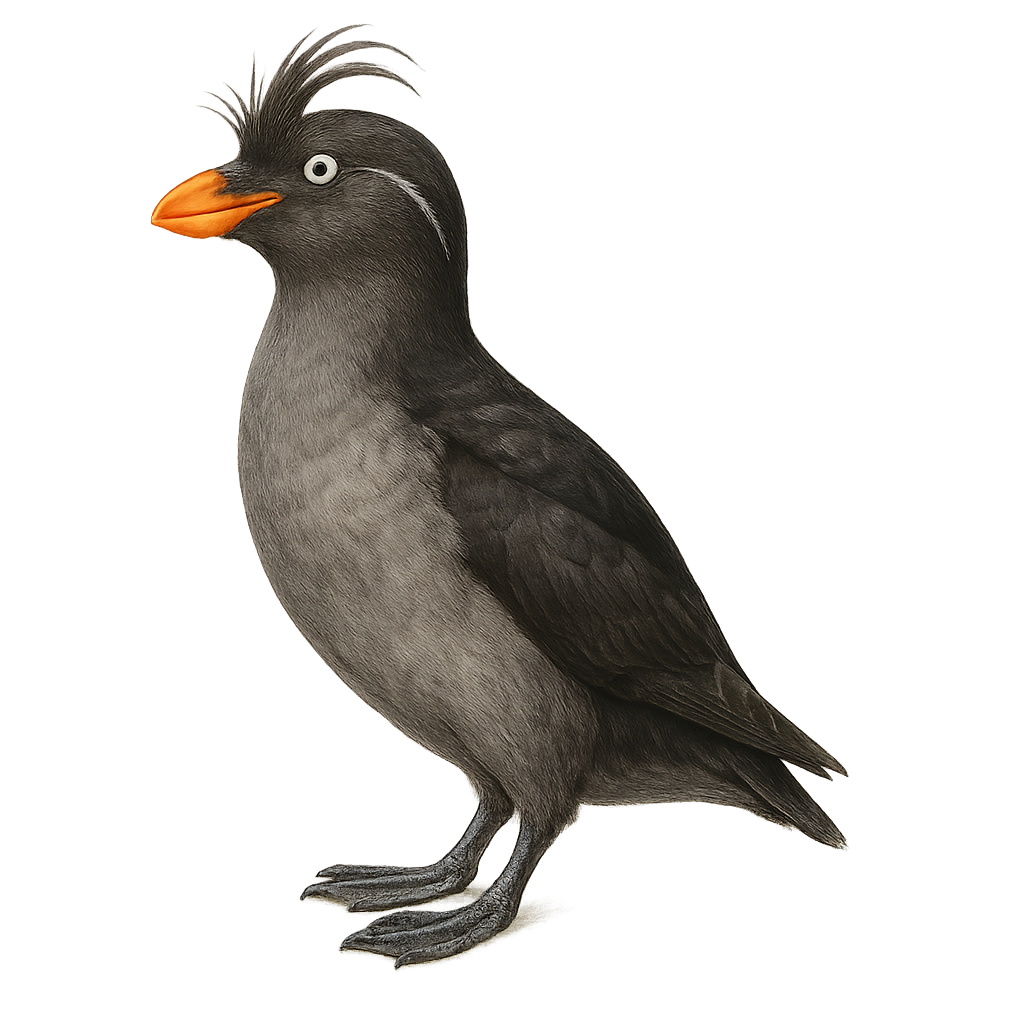Your wildlife photography guide.
Explore the crested auklet in detail, study its behavior, prepare your shots.
Where to observe and photograph the crested auklet in the wild
Learn where and when to spot the crested auklet in the wild, how to identify the species based on distinctive features, and what natural environments it inhabits. The WildlifePhotographer app offers tailored photography tips that reflect the crested auklet’s behavior, helping you capture better wildlife images. Explore the full species profile for key information including description, habitat, active periods, and approach techniques.
Crested Auklet
Scientific name: Aethia cristatella

IUCN Status: Least Concern
Family: ALCIDAE
Group: Birds
Sensitivity to human approach: Suspicious
Minimum approach distance: 10 m
Courtship display: May to July
Incubation: 29-32 jours
Hatchings: June to August
Habitat:
Rocky cliffs, subarctic islands, coastal areas
Activity period :
Primarily active during the day, with peak activity in the morning and late afternoon.
Identification and description:
The Crested Auklet, Aethia cristatella, is a small seabird belonging to the Alcidae family, easily identifiable by its distinctive crest and dark gray plumage. It measures about 25 cm in length and weighs between 250 and 300 grams. Its bright orange bill and white-ringed eyes add to its unique appearance. This bird is primarily found in the subarctic regions of the North Pacific, particularly around the Aleutian Islands and the coasts of eastern Russia. It feeds mainly on zooplankton, small crustaceans, and fish. The Crested Auklet is an excellent diver, capable of descending several tens of meters underwater to hunt. It nests in dense colonies on rocky cliffs, laying a single egg per season.
Recommended lens:
400mm – adjust based on distance, desired framing (portrait or habitat), and approach conditions.
Photography tips:
To photograph the Crested Auklet, focus on the summer months when the birds are breeding and gathering in colonies on cliffs. Use a telephoto lens of 400mm or more to capture detailed images without disturbing the birds. Be patient and discreet, maintaining a safe distance of at least 10 m. The best photos are often taken early in the morning or late in the afternoon when the light is soft and the birds are active. Consider using a tripod to stabilize your camera and achieve sharp images.
The WildlifePhotographer App is coming soon!
Be the first to explore the best nature spots, track rutting seasons, log your observations, and observe more wildlife.
Already 1 430 wildlife lovers subscribed worldwide

